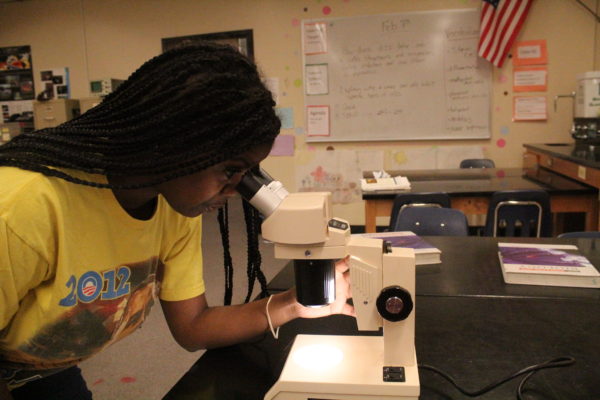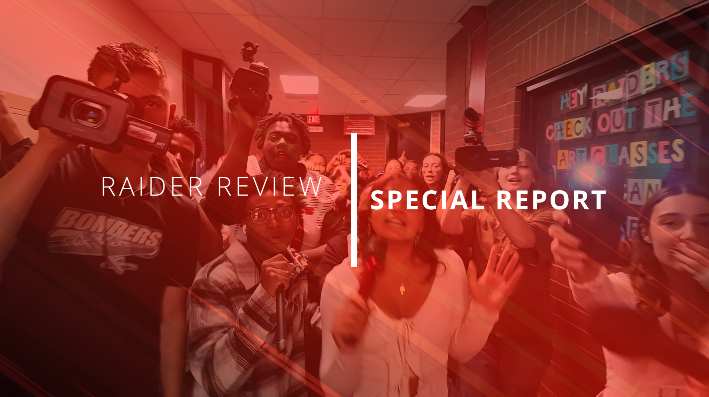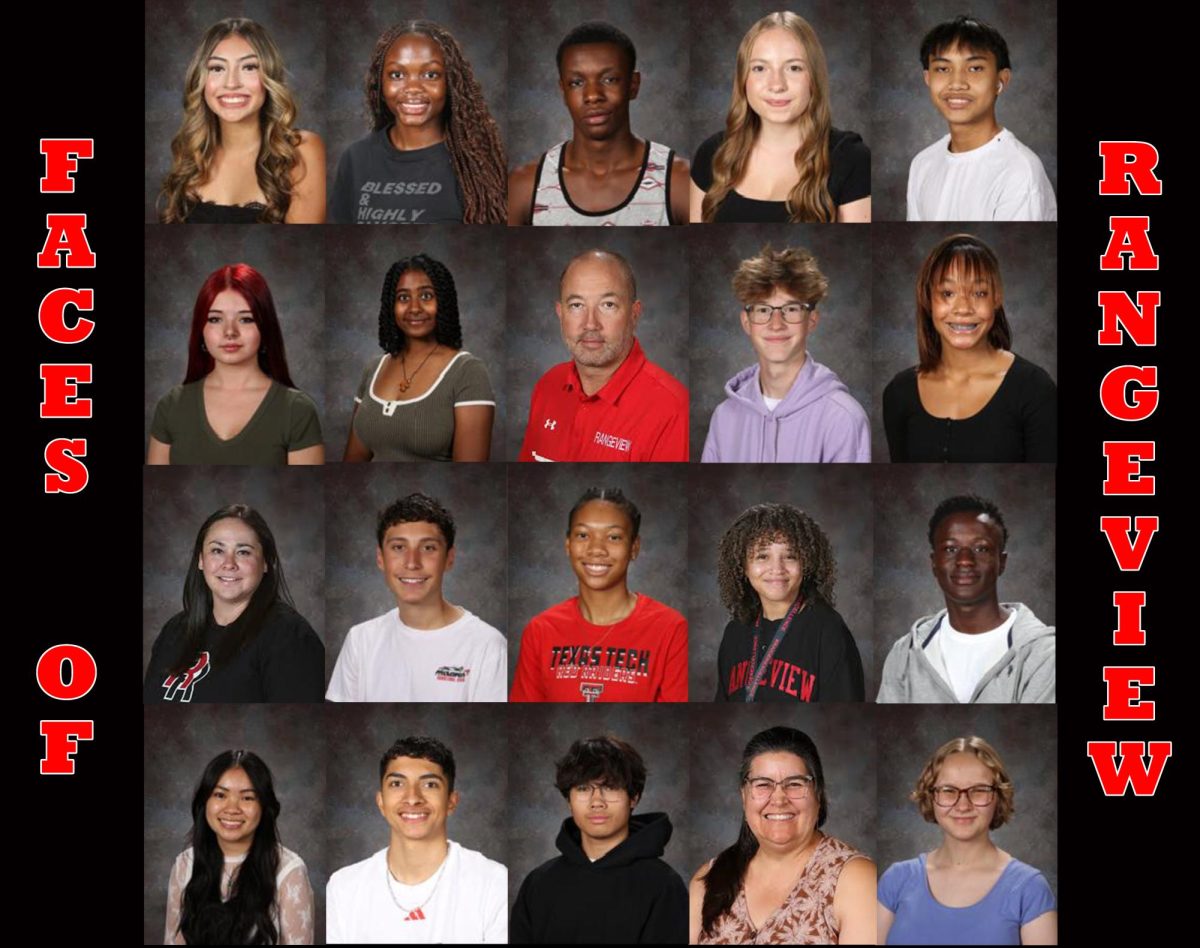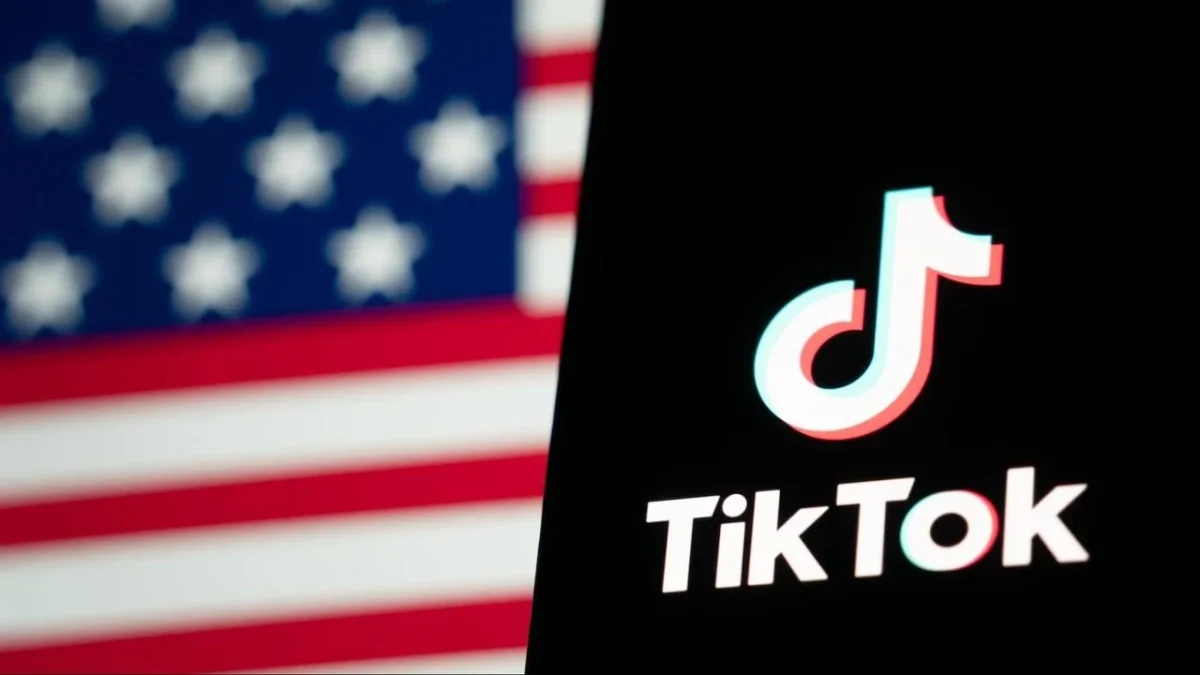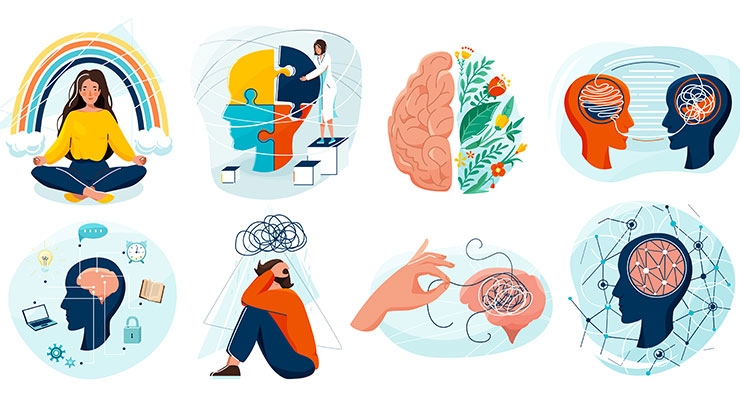Feature Photo By: Connor Rodenbeck – Junior Jordan Higgs looks through a microscope in this posed picture. Science classes are commonly thought of as being prioritized over art classes.
In 2016, the administration at Rangeview High School made the decision to terminate the Business Pathway to make more room for STEM classes. Many students were outraged.
Since then, many feel that Rangeview has prioritized STEM classes over other pathways like business and liberal arts. However, Rangeview is not the only place to have generated controversy over the issue; the workplace has been criticized for underappreciating careers involving the arts.
STEM is an acronym for Science, Technology, Engineering, and Mathematics. Deeper than that though, it is an interdisciplinary approach to education that melds academic concepts and real-world application in the aforementioned fields, according to nsta.org.

While many consider a career in STEM to be more lucrative in terms of income, some wonder if creativity is being diminished in this country’s youth due to the increasing demand for jobs that require an education in STEM.
Statistics indicate that graduates with a degree in STEM could make up to $4 million more in lifetime earnings than graduates who obtain a degree in humanities, according to nytimes.com. The result of this is that funding for liberal arts has been cut in public institutions, leaving room for added incentives to STEM majors.
Many students who are pursuing a degree in humanities — music, art, creative writing — are left wondering if they can find success in the workplace.
Here is a personal account of his experiences with STEM and art classes by: Jorion Marshall
Every day feels the same. The classes, the material, and the routine all feel like a rerun of the day before. This is the life of a creative mind confined in Rangeview High School. This life is mine. Throughout high school I have had seven classes every year except my senior year. A full schedule is intense enough, but when it consists of seven classes that you aren’t even interested in, it makes school miserable. Willpower is a limited resource, and when it’s depleted, it’s hard to renew. So why should students continue to drain their willpower on things that don’t pique their interest and won’t directly benefit them in the long run? At Rangeview High School, the STEM program is branded into the curriculum. The STEM program nearly decimated the entire business department, and nearly all of the senior class top ten are a part of it. So where do the rest of us stand? Where do the kids with aspirations in art, business, healthcare and creativity get to learn and improve? I am glad I have found journalism in my high school years, because if not, I wouldn't have any other outlets to display my talents in film, art, and video. Yet one class of 30 students can’t represent the entire population of Rangeview that is affected by this issue. Imagine a campus full of opportunities for all students, of all abilities, that come to school intrigued to learn and to grow as individuals rather than coming just to graduate. Because Rangeview isn’t an environment like this, many students lack the vigor to even finish. The problem isn’t that Rangeview isn’t attracting smart enough students; the problem is that Rangeview provides less for students who don’t look for careers in science, technology, engineering and math. The only way to resolve this issue is to add more options for creative learners and reintroduce the concept of growth rather than high test scores. More creative classes that are based around film, art, media, music, writing, and performing need to be offered to students. This leads to a less confused life in college, and certainty about their career early on. Without the representation of all students in their classrooms, how can they prepare students for their choice of post-secondary careers?
However, some make the case that STEM is not exclusive to specialized fields like science and mathematics; in fact, creativity is often used in STEM based projects.
According to huffingtonpost.com, students need to be encouraged to combine the technical knowledge that comes with STEM and combine them with skills in creativity to produce more innovative ideas. There is a push to create “ideas that give the arts new technologies, music new instruments, farmers new machines, and our businesses a competitive advantage.”
Most people would agree that there is no denying a shift in focus to STEM curriculums, whether that be in the workplace, college, or even high school.

Mr. Riggins, an art teacher at Rangeview High School, gave insight on how humanities are being affected by STEM. He mentioned that despite the obvious push for careers in engineering and science, it is still praiseworthy to be an artist.
However, he notes that many artists have a fear to pursue creative endeavors.
“It’s so easy to make money in STEM. It’s easy to go into nursing because there’s a need for it. It’s so much more competitive to be an artist,” said Mr. Riggins.
A student of his, junior Laura Good, expresses the same sentiment, saying that it feels like it is “taboo” to be an artist in a society so focused on innovation in science and medical fields.
Good, who is president of Art Club, noted that there is a lack of participation in art club meetings and events. There may or may not be a correlation between this and the increase in STEM focus.
Regardless, the art department isn’t lacking support from administration, at least according to Riggins.
“I’ve never at any point in my career, under three different principles that I felt that the arts were forgotten or that they aren’t pushing it,” Riggins says.
However, he and his students hope for growth in the art department. “Would we love a specific pathway for visual arts? Yeah,” Riggins digresses.

Some students feel that STEM is going to lead to successful careers. Some students would rather pursue the arts. Some have even switched from STEM to humanities.
One such student, senior Maddie Heiken, stated that she took engineering classes because she thought that it would raise her GPA and lead to a lucrative career.
“I finally realized that I should be doing the things that I love and my heart fell in love with acting and designing and becoming a leader within those fields,” Heiken said. “I felt like I couldn’t be a leader in STEM.”
Whether or not STEM has “taken over” at Rangeview, students still have the autonomy to choose their own pathway.
Most creative students, in particular, are content with their pursuit of humanities because they love what they are doing.
“I think that the whole goal of choosing a career is finding something that you really enjoy and something that makes you happy,” Good states. “Creative people want to choose to do something creative, so it’s not about the money to them, it’s about the happiness and emotional rewards.”
